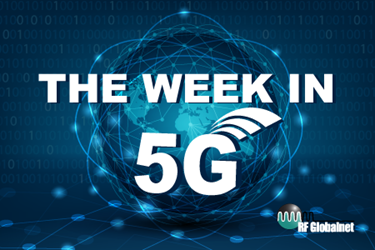The Week in 5G — Telecom & Aviation Sector Still Arguing Over Spectrum Use, Amazon Announces Private 5G

By Abby Proch, former editor

In a Nov. 24 filing with the FCC, Verizon and AT&T offered several ways in which they will alleviate safety concerns expressed by air safety officials. The concession comes despite the telecoms’ unwavering stance that, under current accommodations, no interference will occur between telecom spectrum usage and aviation altimeters. The compromises, which they plan to offer for 6 months or until proven unnecessary, are limitations to overall C-band effective isotropic radiated power (EIRP) levels and airport- and heliport-specific power flux density thresholds. However, the Aerospace Industries Association has balked at the concessions, saying they’re not enough to alleviate safety concerns. The FAA has yet to comment, but a response is expected this week, according to an article from U.S. News & World Report. The top U.S. telecoms have agreed to delay 5G deployment until Jan. 5.
Ready for deployment and itching to become increasingly competitive with China, Japan plans to open up 5G O-RAN experimental networks starting in 2022. According to RCRWireless, the country’s top four telecoms are expected to participate in the tests, with the hopes of rolling out 5G base stations throughout the country by April 2024.
Stateside, Booz Allen Hamilton is opening a private 5G lab in Maryland where it plans to test cyber resiliency, artificial intelligence (AI) and machine learning (ML) modeling, and internet of things (IoT) applications development, according to a press release by Consulting.us. In March 2021, the Department of Defense chose Booz Allen and several others to integrate and test 5G at five U.S. military locations. That $600 million deal also involves the development of an “AI spectrum sensing application that enables dynamic spectrum sharing for the Air Force’s airborne radar systems and 5G-enabled AR and VR supporting virtual, live military training ranging from an individual soldier to in-field, collaborative training for a full brigade,” per a company press release.
Indian telecom Vodafone Idea recently showcased its ability to conduct network slicing over its 5G standalone (SA) network, thanks to a partnership with Nokia. Network slicing allows telecoms to separate their entire network into different subsets, according to a report by TelecomTalk. In its most recent demo, Vodafone created two slices, one for general traffic and one for high speed and low latency. Without the slicing, a virtual reality (VR) experience delivered poor resolution. With it, the user experience improved. In practice, network slicing will allow telecoms to produce specialized enterprise solutions.
While some telecoms and providers in need of 5G equipment have been forced to work around banned Chinese supplies, Vodafone is shopping around for more traditional reasons: cost. According to Economic Times, Vi is looking beyond the expected European suppliers of Nokia and Ericsson in hopes of finding a more cost-competitive solution. Local and international vendors are in the mix, but it’s unclear if Huawei and ZTE are options as well. India has thus far not joined a growing ban on components from Chinese firms identified as being susceptible to government intervention.
Speaking of shopping: If you’re looking for something, almost anything, chances are Amazon’s got it. It’s true, apparently, for private 5G networks. Amazon Web Services (AWS) announced its new AWS Private 5G service that provides enterprises with the hardware, software, and SIM cards needed to deploy their own mobile network, according to a report by Urgent Communications. After assembly, the network autoconfigures and operates within shared spectrum in the 3.5 GHz band. The service is reportedly scalable to meet various needs, including IoT, and does not require payment per device.
